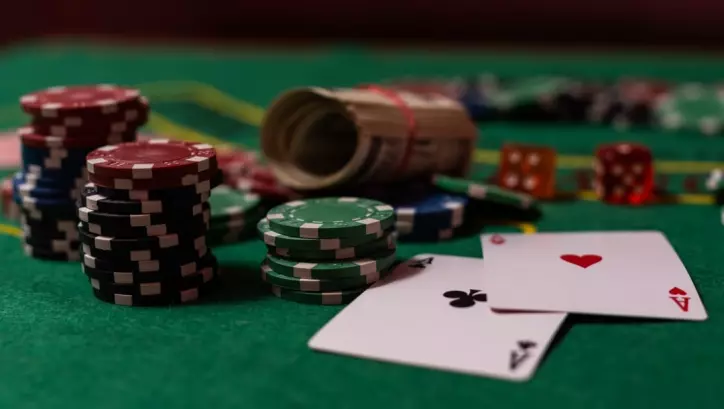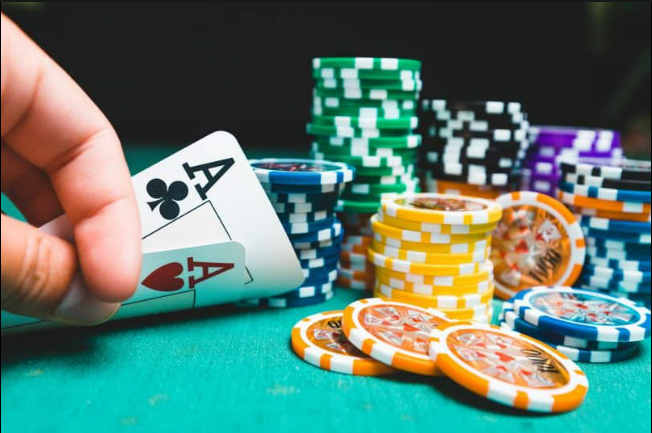“Mystery bounty events are often a source of enjoyment for many online poker enthusiasts. It’s no surprise, as there’s a special satisfaction in knocking out a player, and in this particular format, you’re rewarded additionally for doing just that.
Are you interested in delving deeper into these widely popular tournaments? If that’s the case, you’ve landed in the right spot. This blog post will provide you with a comprehensive understanding of mystery bounty events. How do they function, and how can you enhance your strategy? Keep reading to find out.
What Is a Mystery Bounty?
A mystery bounty is a variant of poker tournaments where participants earn extra prizes for eliminating their adversaries, and the rewards are randomly chosen from a predefined pool of prizes.
While some physical casinos host mystery bounty games, they are more frequently encountered as online poker tournaments.
How Does a Mystery Bounty Function?”

A mystery bounty tournament typically comprises two segments: the initial phase, often referred to as the early stage, and the subsequent final phase, or late stage. There are instances where a mystery bounty extends over two days, commencing the final phase on the second day.
Typically, the prize pool is evenly divided into two portions. One part is allocated to the top performers, similar to standard tournaments. The second portion is reserved for bounties, but the distribution of these bounties is not uniform; instead, they come in various amounts, with the exact amount remaining undisclosed until the moment of elimination.
The first stage of a mystery bounty event does not involve bounty rewards; these are exclusively allocated during the second phase. Consequently, you’ll observe differing playing strategies among participants in these two stages.
It’s worth noting that each mystery bounty event may adopt a slightly distinct prize structure, so it’s prudent to review the specific rules whenever you engage in online poker. This is essential for making optimal decisions. Here’s a general example of how such an event might operate:
Example
Let’s consider a $5,500 mystery bounty event with a $500 entry fee and 200 entrants, resulting in a $1 million prize pool. Half of this sum is allocated to bounties, while the remainder constitutes the regular prize pool, to be distributed in the customary tournament fashion.
The bounty pool, in this hypothetical scenario, might be distributed as follows:
1 bounty of $200,000.
2 bounties of $70,000.
5 bounties of $20,000.
8 bounties of $5,000.
16 bounties of $1,250.
In this scenario, there are only 32 bounties, which means that only 32 players would qualify for the final stage. Nevertheless, reaching this stage can be highly rewarding, as eliminating just one opponent grants you a shot at the highest $200,000 bounty.
Why Do Recreational Players Favor Mystery Bounties?
Mystery bounties tend to be more appealing to recreational poker players. What drives this preference?
There are multiple reasons. Firstly, some players may find the rewards in standard online poker tournaments to be excessively concentrated at the top. Although they consistently achieve respectable finishes, they rarely secure victory. For them, mystery bounties offer a potential avenue to accumulate more prizes than the conventional tournament structure allows.
Secondly, it introduces a twist to the traditional poker game. Success is not solely measured by finishing in first place; now, the objective is to eliminate as many opponents as possible, as the rewards can be substantial.
Lastly, and most importantly, it’s enjoyable. Every time you eliminate an adversary, there’s the thrill of potentially winning a substantial prize. The element of surprise adds excitement to the experience.
Experienced players may not favor this format as much due to the heightened variability it introduces. Skillful players can consistently secure victories, so the random allocation of rewards may seem unnecessary when they’re already favored for high finishes.
Mystery Bounty Strategy
Mystery bounty events are, at their core, still poker. So, you might think that your tactics should align with your traditional no-limit poker strategy, right? Well, that’s not entirely accurate. The added bounties alter your expected value, leading to a range of implications.
Furthermore, the two tournament stages are distinct, requiring distinct approaches.
Early Stages:

In the initial stages, your primary objective is to secure a substantial chip stack to carry into the final phase. Imagine a situation where you barely scrape through to the next stage with few chips; under such circumstances, it becomes exceedingly challenging to eliminate opponents. Your adversaries can capitalize on their superior chip counts, putting you in unfavorable positions. Therefore, merely advancing to the next stage isn’t enough; you should aim to do so with a reasonably sizable stack.
During the early stages, patience and a tight playing style are paramount. It’s essential to avoid recklessly squandering your chips, as this can have severe repercussions and impede your pursuit of bounties. Given the prevalence of recreational players in these events, you may observe a looser style of play among your opponents. Take mental note of this and use it to your advantage. Curiously enough, engaging in self-talk can assist you in retaining such observations.
Late Stages
As you enter the bounty-rich phase with a substantial chip stack, the most exhilarating part of the tournament unfolds. If there ever was a time to employ bluffing tactics like a seasoned professional, this is it. The rationale behind this is as follows:
When your stack surpasses that of your opponents, you have the luxury of calling their all-in bets with a broader range of hands. Even if you don’t start as the statistical favorite to win the hand, the dynamics change significantly once you factor in the potential bounty earnings.
For instance, suppose the likelihood of you eliminating an opponent with a call is only +400. If the expected value (EV) of the bounty is exceptionally high, the play can still yield a positive EV. You can calculate the EV of the bounties by summing the total unclaimed bounties and dividing this figure by the total number of remaining players.
Preparation
What should your preparation entail for a mystery bounty event? Clearly, honing your overall poker strategy is a prerequisite. This may involve reading articles, consuming video content, or tuning in to poker podcasts—choose the method that suits you best.
Furthermore, it’s crucial to ascertain the number of players slated for the upcoming mystery bounty tournament tables. Will you be participating in full-ring poker? If so, then practicing at short-handed poker tables may not be as relevant, and vice versa.


